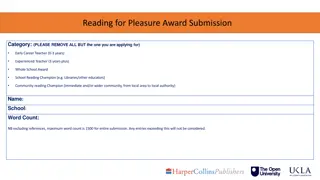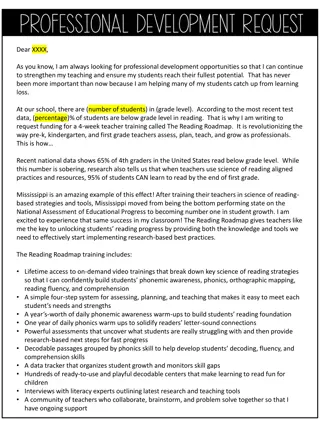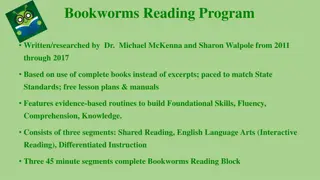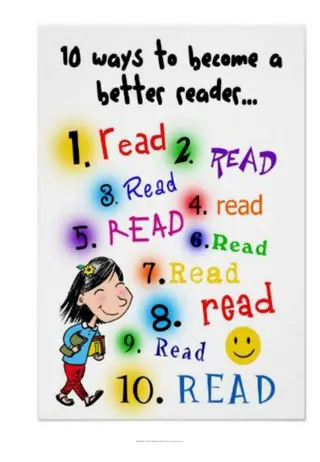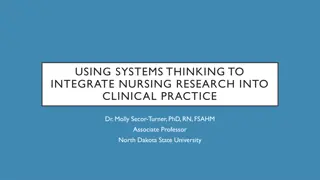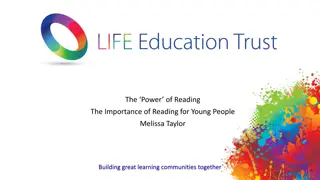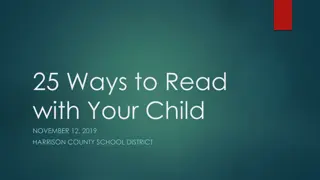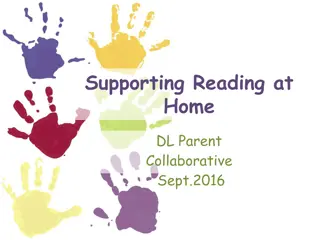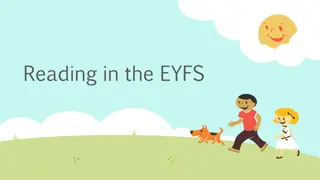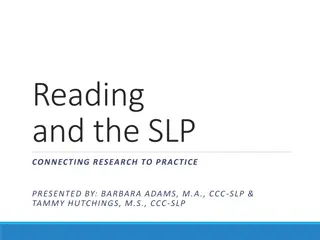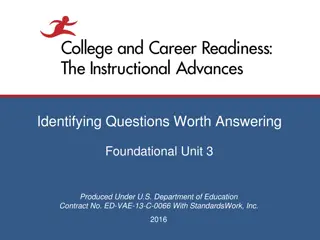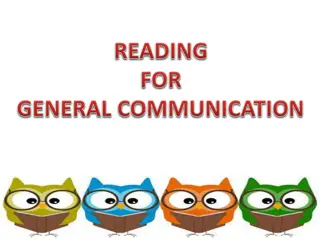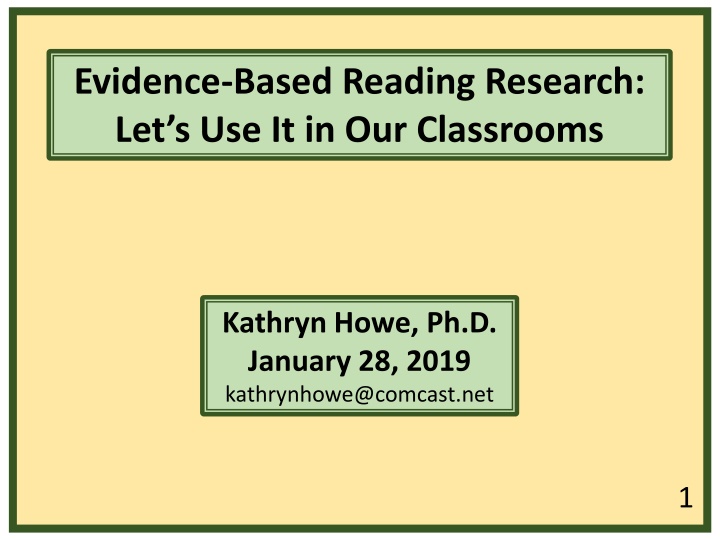
Evidence-Based Reading Instruction in the Classroom
Explore the shift towards evidence-based reading instruction, emphasizing mastery in K-3 to reduce Special Ed referrals. Discover balanced literacy programs, key components, and the call for change in Minnesota's reading approach. Uncover the 5 components of reading instruction and effective teaching strategies highlighted in research, along with the importance of Multi-Tier System Support in schools.
Download Presentation

Please find below an Image/Link to download the presentation.
The content on the website is provided AS IS for your information and personal use only. It may not be sold, licensed, or shared on other websites without obtaining consent from the author. If you encounter any issues during the download, it is possible that the publisher has removed the file from their server.
You are allowed to download the files provided on this website for personal or commercial use, subject to the condition that they are used lawfully. All files are the property of their respective owners.
The content on the website is provided AS IS for your information and personal use only. It may not be sold, licensed, or shared on other websites without obtaining consent from the author.
E N D
Presentation Transcript
Evidence-Based Reading Research: Let s Use It in Our Classrooms Kathryn Howe, Ph.D. January 28, 2019 kathrynhowe@comcast.net 1
Take-away Ideas 1. Evidence-based reading instruction in K-3 is focused on correctly identifying words. 2. Research suggests how to organize schools, classrooms and instruction efficiently for success. 3. Taking time to teach for mastery in K-3 greatly reduces Special Ed referrals. 2
Balanced Literacy A balanced literacy program uses whole language and phonics and aims to include the strongest elements of each. The components of a balancedliteracy approach are . . . The read aloud, guided reading, shared reading, interactive writing, shared writing, Reading Workshop, Writing Workshop and Word study." 3
Beginning Reading in Minnesota Balanced literacy has been the preferred reading instructional philosophy of most Minnesota K-3 classrooms for several decades. Minnesota now has the widest gap in reading scores between white and non-white students in the country. It s time to change to evidence-based reading instruction. 4
Evidence-Based Reading Instruction Learning to read is not natural. It must be taught to most students. The 5 components of reading instruction are: phonemic awareness, phonics, reading fluency, vocabulary, and text comprehension. Instruction is designed to minimize teacher talk, maximize student responding, and make learning fool-proof. 5
Evidence-Based Reading Instruction Research has identified many effective teaching strategies. Here are three: systematic & explicit phonics instruction many opportunities to respond immediate error correction Systematic phonics produces the biggest impact on growth in reading when it begins in kinder- garten or 1st grade before children have learned to read independently. NRP, sec. 2, p. 93. 6
Multi-Tier System Support (MTSS) Evidence-based instruction begins with a framework for instruction, assessment, and support for each group and individual student. An MTSS school makes it clear that no teacher can teach the wide diversity of students within her class without a strong school support system. INFRASTRUCTURE 7
Assessment: General Outcome Measures (GOMs) Gr. 2 Goals cw/m* Fall Winter Spring School A School B 60 75 90 At or above grade level Somewhat below Seriously below *cw/m = correct words per minute 8
Scheduling & Staffing Reorganization One of several ways it has been done: Common grade level scheduling for reading Flexible grouping for all students at each grade level Concentration of all available resources & personnel to that grade level at that time Teachers monitoring student data & meeting regularly to reallocate resources as necessary 9
Steps for Restructuring Put principal in charge of and accountable for restructuring success. Institute regular elementary GOM measurement. Buy evidence-based curricula to replace balanced-literacy curricula. Provide professional development on scientifically-based reading instruction. Restructure school schedule and staffing plan. 10
Conclusion Public schools deliver 85% or more of their curriculum by reading textbooks, worksheets, and computer screens. Students must read well to do well. It matters little what else they learn in elementary school if they do not learn to read at grade level. Fielding, L. et. al., 2007, p. 48 It doesn t matter how many papers we write, trainings we go to, meetings we attend, or Senate hearings we hold if our children do not learn to read at grade level. Paraphrased from Doug Carnine 11
Resources Adams, Marilyn J. (1990). Beginning to Read: Thinking and learning about print. Armbruster, Bonnie B., Lehr, Fran & Osborn, Jean (2001). Put Reading First: The Research Building Blocks for Teaching Children to Read, http://www.readingrockets.org/guides/put- reading-first-research-building-blocks-teaching-children-read Engelmann, Siegfried & Carnine, Douglas (2017). Theory of Instruction: Principles and Applications. Fielding, Lynn, Kerr, Nancy & Rosier, Paul (2007). Annual Growth for All Students, Catch-up Growth for Those Who Are Behind. 12
Resources Continued Gibbons, Kimberly, Brown, Sarah & Niebling, Bradley (2018) Effective Universal Instruction: An Action-Oriented Approach to Improving Tier 1 (The Guilford Practical Intervention in the Schools Series) 1st Edition. kgibbons@umn.edu Grek, Marcia L., (2004). Evidence-based reading instruction and immediate intensive intervention. PowerPoint presentation. Florida State University: Florida Center for Reading Research. Haberdank, L. & Christ, A. Progress monitoring in reading: Why, what and how. A module for pre-service development. PowerPoint presentation. MN RTI Center. 13
Resources Continued Hanford, Emily (2018). Hard Words: Why Aren t Our Kids Being Taught to Read? Radio program. NPR, APM Reports Howe, David E. (2007). Using effective teaching strategies to increase intensity of instruction. PowerPoint presentation. University of Oregon: Western Region Reading First Technical Assistance Center Moats, Louisa (2007). Whole Language High Jinks: How to Tell When Scientifically-Based Reading Instruction Isn t. Thomas B. Fordham Institute. 14
Resources Continued Torgesen, Joseph K. (1998). Catch Them Before They Fall: Identification and Assessment To Prevent Reading Failure in Young Children. American Educator, v22 n1-2 p32-39 Spr-Sum 1998 Torgesen, Joseph K. (2007). Monitoring instructional effectiveness in Grades 1-3 with the purpose of guiding school level initiatives and classroom instruction. Florida State University: Florida Center for Reading Research Torgesen, Joseph K. (2007). Teaching all students to read: Is it really possible? PowerPoint presentation. Florida State University: Florida Center for Reading Research 15

